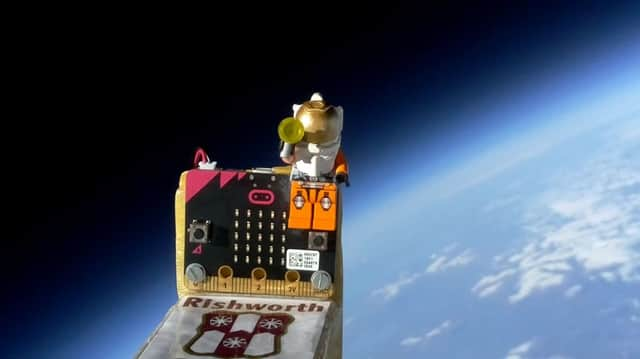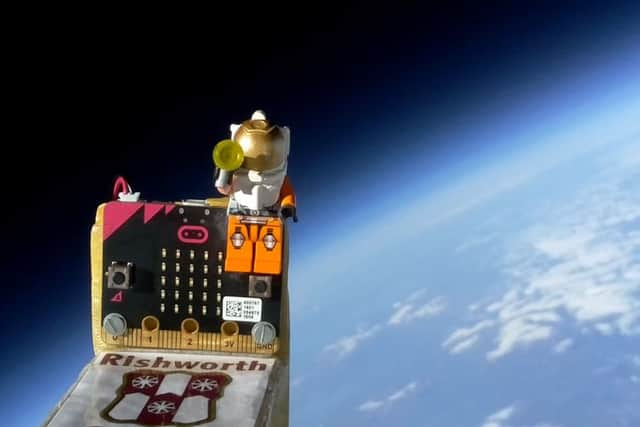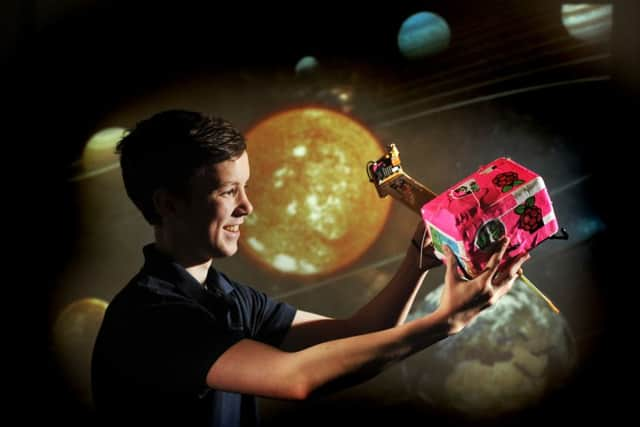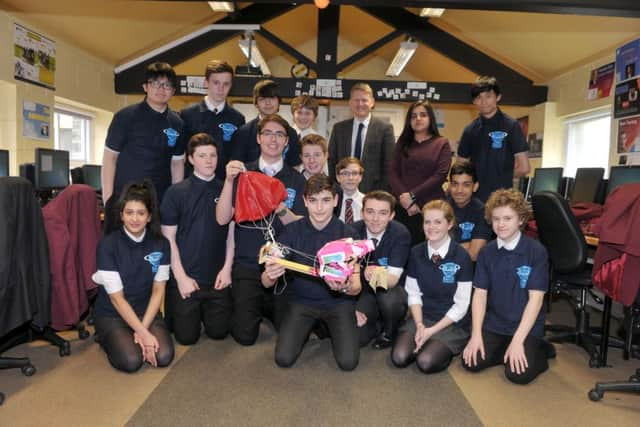Towards Infinity: Calderdale school's incredible journey 100,000 ft up to the edge of space


Their spaceship was launched in clear blue skies from Rishworth School and carried up more than 100,000 ft into the stratosphere by a helium balloon.
Within seconds it was out of sight, but thanks to the efforts of a team of 20 pupils of all ages it was definitely not out of mind.
Advertisement
Hide AdAdvertisement
Hide AdThe payload had been fitted with computers, camera, sensors and GPS technology which meant it both recorded its journey and could be tracked by the excited team on the ground as it made its way up and down.
It also carried with it the school’s logo and a lego pilot - which had been chosen through a competition at Rishworth’s junior school, Heathfield.
The project, Towards Infinity, was started by computer teacher Peter Bell who wanted to get pupils interested in science and was looking for a project involving Raspberry Pi computers. Their journey into space – or very close to it - included both Raspberry Pi computers and a BBC micro:bit
Mr Bell said the work of the pupils and the result of the project had far surpassed his expectations. But now the independent school, in Calderdale, aims to build on this success.
Advertisement
Hide AdAdvertisement
Hide AdRishworth’s headmaster Alistair Gloag said: “I have for a very long time, wanted Rishworth School to develop its own space programme and am therefore delighted that students and staff have worked so hard on this project which has led to the launch of the RISHTI probe. In this initial launch the team have already set new records and put the first BBC micro:bit into near space. While this is a fantastic achievement, this is only the beginning. Rishworth intends to stay in space.”


Pupils had applied to be involved and a group of 20 were selected who worked in four teams responsible for engineering, flight, documentary and publicity.
Once it reached a height of 106,916ft or 20.25 miles pressure caused the balloon to burst and the device began its descent at pace before its parachute deployed.
But thanks to the tracking device the school were able to follow it as it came back down to Earth. Mr Bell said: “We were in two cars following the signal and it was very exciting. We heard later from a pilot that air traffic around the Nottingham area was rerouted because something was coming down to earth fast and it was our computer. It is quite a cool story to be able to tell.”
Advertisement
Hide AdAdvertisement
Hide AdThe school had already tested their tracking equipment by hiding the ship on the moors near Rishworth and getting pupils to locate it. And they were able to repeat this when they found their ship in a farmer’s field near Melton Mowbray. However the excitement has not stopped there. The computer filmed amazing footage of the school’s logo and lego pilot with the curvature of the Earth as the backdrop. It also took stunning pictures above the Boothwood Reservoir where the M62 splits into two and of Buxton and the Peak District.


Year 11 pupil William Pang said: “The project was amazing and we achieved a lot. When we started, I never thought it would be possible to send something three times higher than a jet plane.”
Holly Morgan Clague, from year eight said: “It took months of planning and negotiating until we were able to launch a small computer up into space using a weather balloon, which would record speed, temperature, altitude, latitude and longitude, and most importantly, take pictures and videos along the way. I never thought I’d do something like this. I cannot explain the relief and excitement that flooded through me when we found our module. It felt like all our work had paid off, and this once impossible project was now a big part of all our memories.”
The journey in numbers
Maximum altitude: 32,588m (106,916ft / 20.25 miles).


Maximum vertical velocity: 80.3m/s (179.63mph), reached 14 seconds into its decent, before the parachute deployed.
Advertisement
Hide AdAdvertisement
Hide AdMaximum horizontal velocity: 50.84m/s (113.73mph), reached c. 19km above the jet stream, as were most of the fastest horizontal speeds recorded,
Minimum temperature recorded by the external sensor outside the module: -47.9°C (at an altitude of 19,934m)
Minimum. temperature inside the module: 0.6°C (Because of the heat from the two on-board computers.)